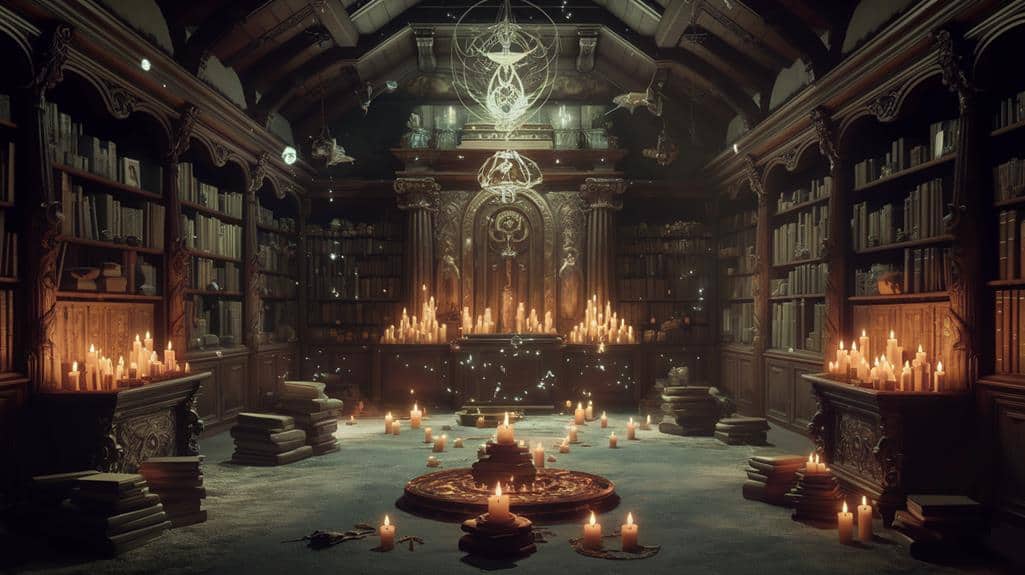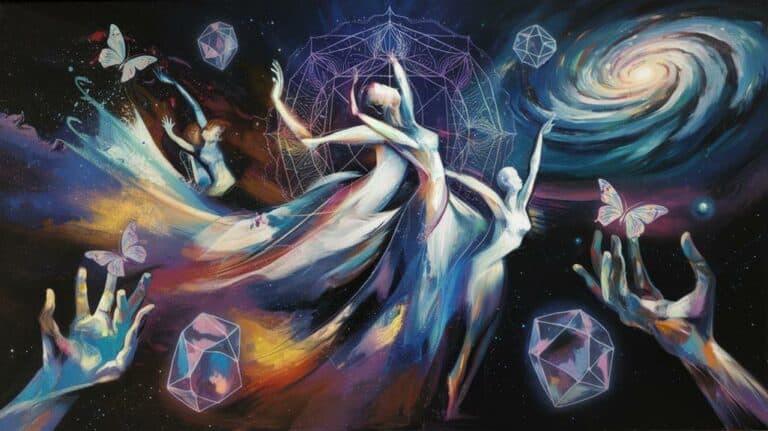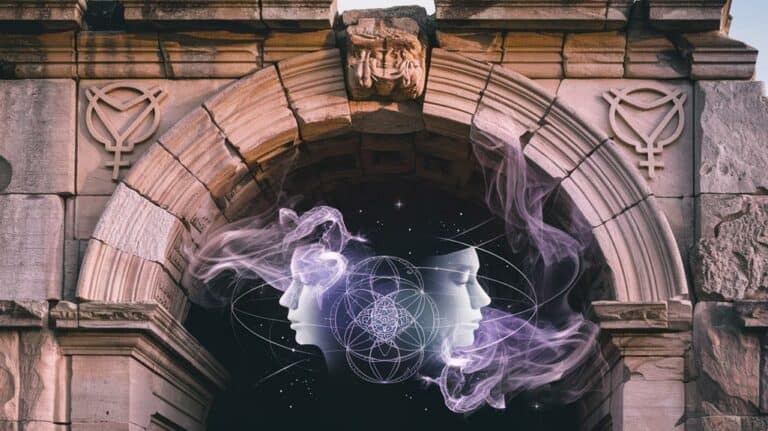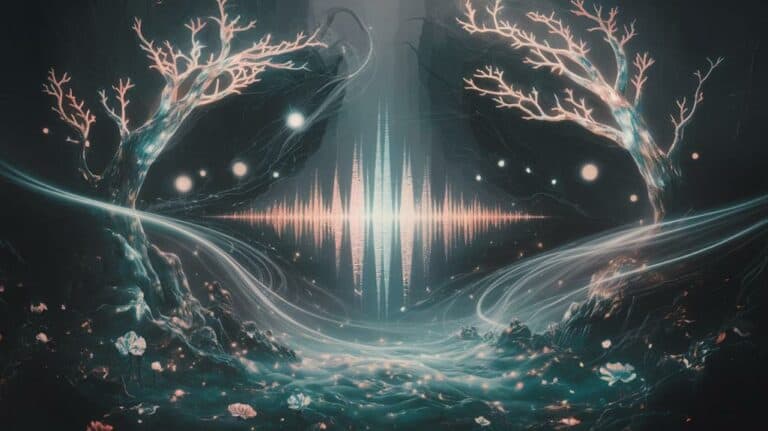A History of Mysticism
Mysticism has fascinated humanity for millennia, and you’ll be surprised to discover its profound impact on our collective history. From ancient ecstatic rituals to contemporary scientific explorations, this enigmatic domain reflects our relentless pursuit of deeper understanding. Whether you’re drawn to the contemplative practices of Eastern philosophies or the esoteric traditions of the West, unpacking the history of mysticism promises to reveal the complexities of the human experience. So, prepare to set out on a journey that may just challenge your very perceptions of reality.
Ancient Mystical Practices
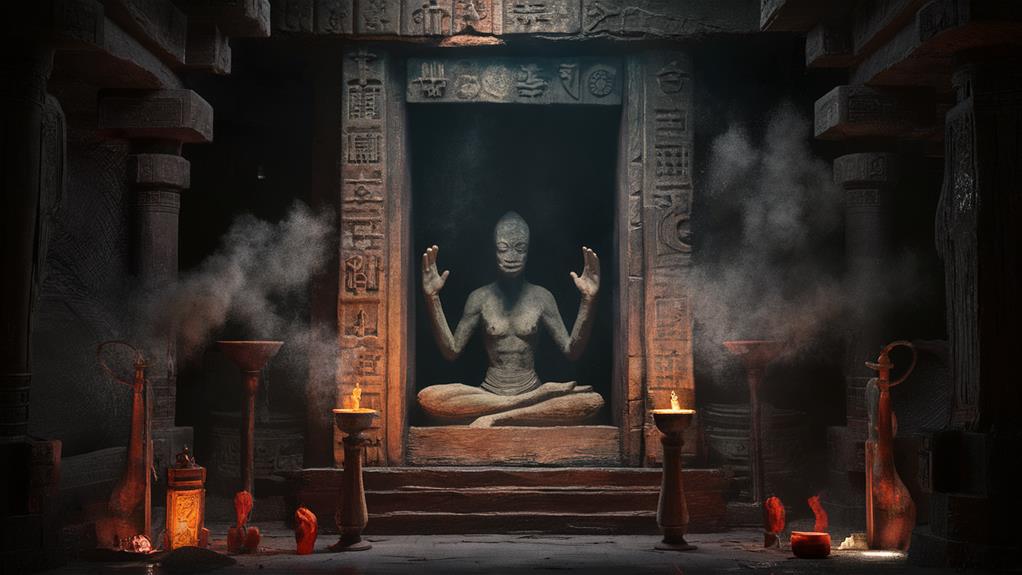
Across the ancient world, mystical practices and beliefs have long held a fascinating sway over the human imagination. From the enigmatic temples of Egypt to the esoteric rituals of Mesopotamia, these ancient spiritual traditions have captivated seekers throughout the ages.
Delving into the domains of the unseen, practitioners of these mystical arts sought to unravel the mysteries of existence, to commune with the divine, and to reveal the hidden potentials of the human mind and spirit. Whether through the ecstatic trances of shamanic cultures or the contemplative disciplines of monastic orders, these ancient mystics pursued a deeper understanding of the nature of reality and the human condition.
Their legacies continue to resonate, inviting us to explore the boundless depths of our own consciousness and to embrace the awe-inspiring wonder of the cosmos. In the pursuit of wisdom and enlightenment, these ancient mystical traditions offer us a glimpse into the timeless human endeavor to transcend the limits of the ordinary and to discover the extraordinary within.
Eastern Mysticism
While the ancient mystical traditions of the West have captivated the imagination, the rich tapestry of Eastern mysticism offers a unique and profound perspective on the nature of consciousness and the human experience.
From the meditative practices of Buddhism to the spiritual wisdom of Hinduism, Eastern philosophies have long recognized the interconnectedness of all things, inviting us to transcend the illusion of the separate self and align with the eternal rhythms of the universe.
Through disciplines like yoga, meditation, and contemplation, the Eastern mystic initiates a journey of self-discovery, peeling away the layers of conditioning to uncover the luminous essence of their being.
This path of inner exploration challenges the Western predisposition towards materialism and individuality, reminding us that true freedom lies not in the acquisition of external objects, but in the direct realization of our own boundless nature.
Western Esoteric Traditions
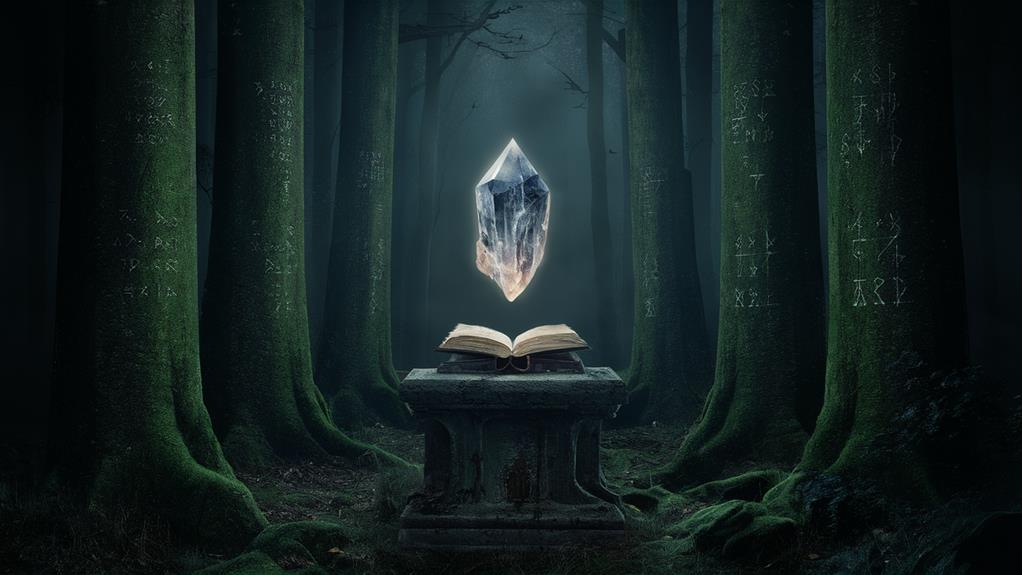
The Western esoteric traditions have long captivated the curious mind, offering a rich tapestry of mystical insights and transformative practices.
From the enigmatic Hermetic teachings to the profound Neoplatonism, these wisdom streams have intrigued seekers throughout the ages, promising a deeper understanding of the human condition and our place in the cosmos.
Investigate the symbolic world of Kabbalah, where the divine emanations of the Godhead are unraveled through intricate diagrams and meditative contemplation.
Explore the alchemical opus, a metaphorical journey of personal and spiritual transmutation, where the base metals of the soul are refined into the gold of enlightenment.
Traverse the labyrinthine paths of Western magic, where the manipulation of subtle energies and the invocation of archetypal forces release the doors to hidden dimensions of reality.
Immerse yourself in these esoteric traditions, for they offer a gateway to self-discovery, empowerment, and the unfolding of your true, liberated nature.
Mysticism in World Religions
Beyond the Western esoteric traditions, mysticism has permeated the spiritual landscapes of diverse world religions. From the contemplative practices of Hinduism and Buddhism to the ecstatic rituals of Sufism, the yearning for direct union with the divine has found myriad expressions.
In the Upanishads, seekers initiate a journey to uncover the true nature of the self, dissolving the illusion of separation. Zen Buddhists engage in paradoxical koans, challenging the limitations of rational thought to awaken profound insights.
Islamic mystics, known as Sufis, dance and chant to experience the presence of the Beloved, transcending the confines of the ego. Across traditions, the mystic seeks to transcend the confines of the ego, to commune with the ineffable, to uncover the essence of being.
Through practices of contemplation, devotion, and surrender, the mystic ventures into the depths of human experience, returning with glimpses of the sublime.
Mystical Literature and Art
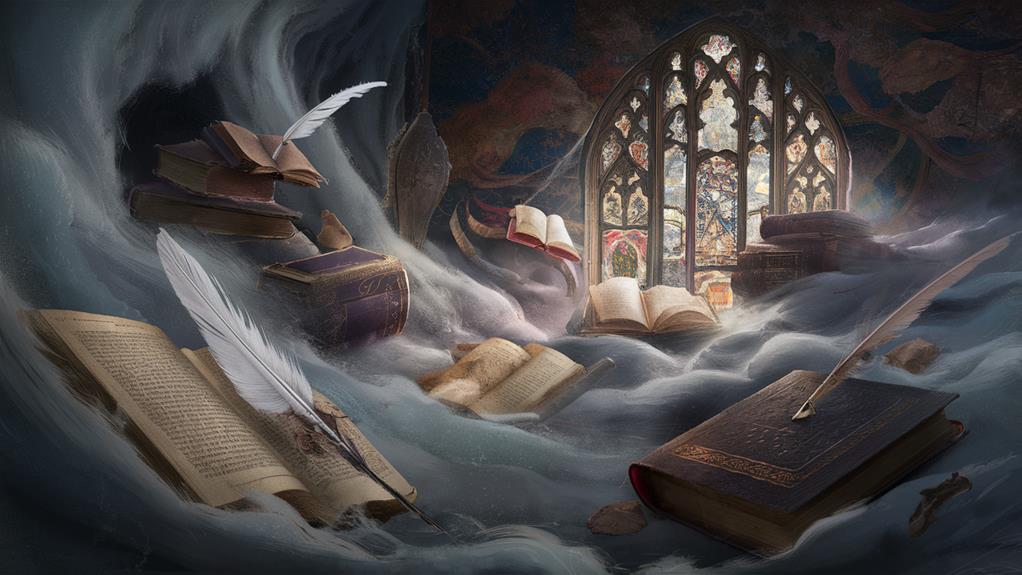
Countless works of literature and art have blossomed from the fertile soil of mystical experiences. Poets, painters, and philosophers have long sought to capture the ineffable, to give form to the formless, and to share their glimpses of the divine.
From the ecstatic verses of Sufi mystics to the intricate mandalas of Tibetan Buddhists, the creative impulse born of mystical insight has produced some of humanity’s most profound and enduring cultural treasures.
In these works, the veil between the material and spiritual domains is lifted, revealing a deeper reality that transcends the boundaries of ordinary consciousness.
The mystic’s journey, with its moments of ecstasy and despair, illumination and darkness, is distilled into symbols, metaphors, and narratives that invite the reader or viewer to initiate their own transformative exploration.
Engage with these works not as passive observers, but as fellow travelers, allowing them to awaken the mystical dimension within your own being.
Modern Mystical Movements
Amidst the rich tapestry of mystical traditions, modern movements have emerged, offering fresh perspectives and innovative approaches to the eternal quest for spiritual enlightenment.
These contemporary currents, fueled by humanity’s yearning for transcendence, have found fertile ground in the ever-evolving landscape of the modern world. From the resurgence of ancient Eastern philosophies to the rise of New Age spirituality, seekers navigate a myriad of paths, each promising deeper self-understanding and connection to the divine.
Whether through meditation, energy healing, or eclectic spiritual practices, these modern mystics endeavor to uncover the hidden truths that lie within, challenging the boundaries of conventional wisdom.
Their teachings echo the timeless wisdom of their predecessors, yet they’re imbued with a distinctly modern sensibility, speaking to the unique needs and concerns of the contemporary seeker.
In these movements, the mystical experience is no longer confined to the cloistered halls of the past, but rather blossoms within the very heart of the modern condition.
Scientific Perspectives on Mysticism
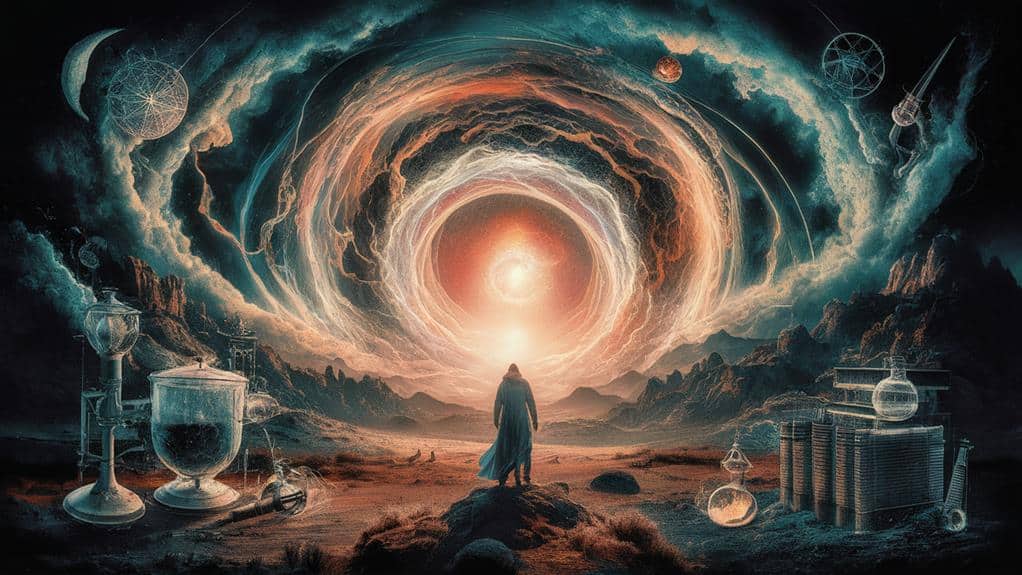
How do scientific perspectives shed light on the nature of mysticism? In the modern age, researchers have explored the neurological and psychological underpinnings of mystical experiences, revealing fascinating insights.
Brain imaging studies reveal that altered states of consciousness associated with meditation, prayer, and spiritual practices correlate with heightened activity in regions involved in self-reflection, emotional processing, and sensory integration. This suggests that mysticism taps into fundamental mechanisms of human cognition, challenging the notion that such experiences are purely supernatural or irrational.
Furthermore, psychological research has identified predictors and personality traits linked to mystical inclinations, from openness to experience to a tendency toward transcendent awareness.
This suggests that mysticism isn’t merely a fringe phenomenon but an integral part of the human condition, shaped by both biological and cultural factors. By embracing scientific scrutiny, we may come to a deeper understanding of the profoundly transformative potential of mystical states, and their role in our collective quest for meaning, purpose, and connection.
Conclusion
You’ve commenced a profound journey through humanity’s timeless quest to grasp the ineffable – from the ecstatic rituals of ancient mystics to the contemplative disciplines of modern spiritual movements. This tapestry of mystical traditions reminds you that the search for deeper meaning and connection with the divine remains an integral part of the human experience, transcending cultural boundaries and inviting you to ponder the mysteries that lie at the heart of your own existence.



